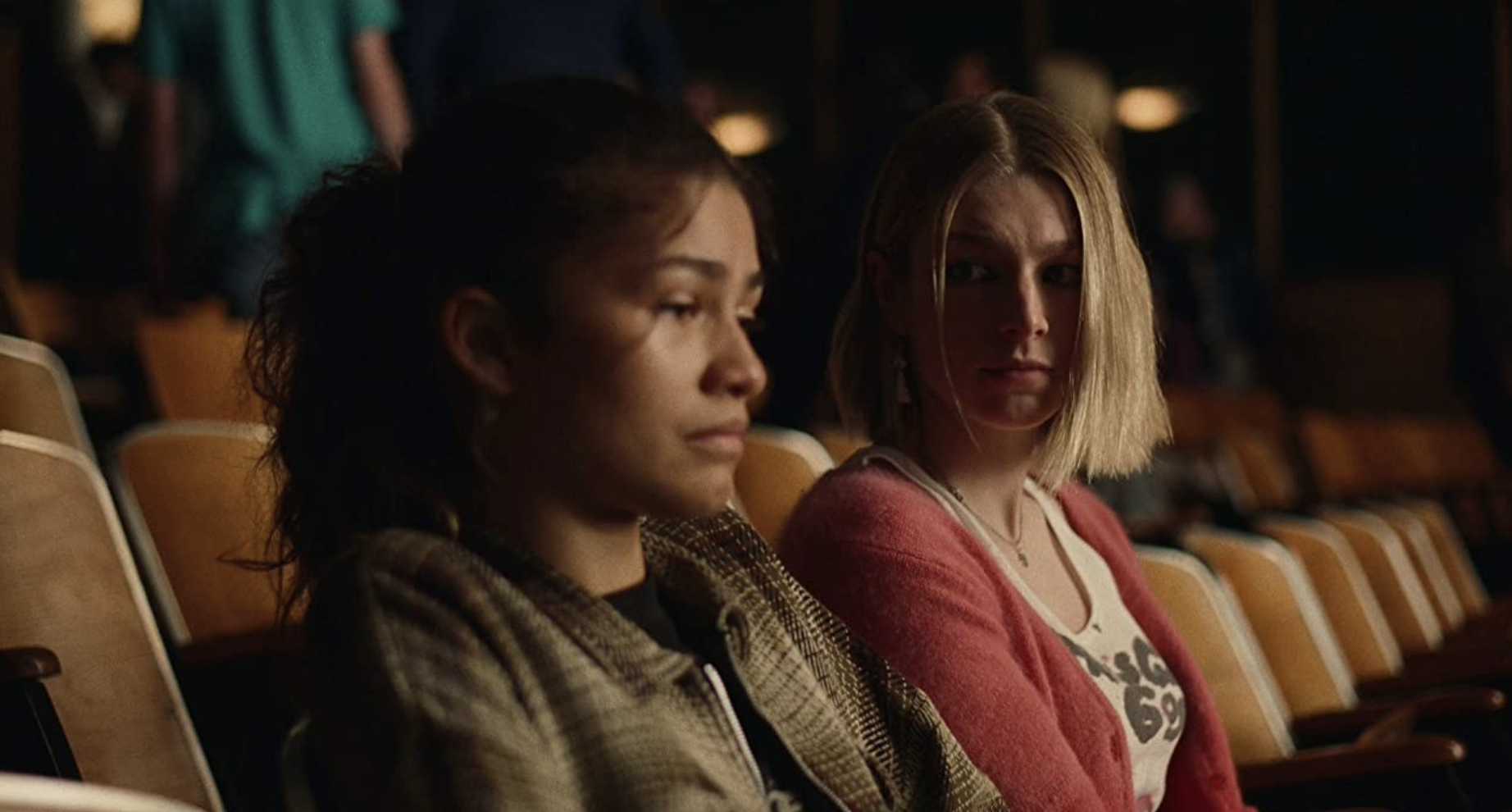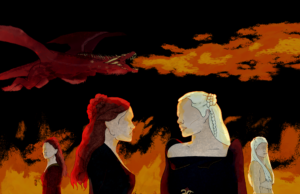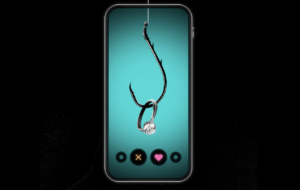Euphoria just might be Gen Z’s defining teen drama. While the show certainly draws from its predecessors, combining the raw honesty of Skins with the intrigue and glamor of Gossip Girl, it has also made a name for itself all on its own. The first season even established Sam Levinson, who writes and directs every episode, as something of an auteur. With the season premiere breaking HBO Max viewership records, season two started off with considerable promise. However, the dazzling cinematography, wardrobe, and makeup fail to compensate for the show’s confusing plot and lack of a cohesive statement.
The show follows a group of high school students as they struggle with relationships, addiction, and identity. Featuring a stellar ensemble cast, part of the show’s allure (at least initially) was the careful attention it paid to its characters. The second season continues to use this technique, beginning with a focus on Fezco (Angus Cloud), Rue’s drug dealer with a heart of gold. In one of Levinson’s characteristic flashbacks, we see Fez’s inevitably troubled childhood and his relationship with his adopted brother, Ashtray (Javon Walton). Cut back to the present, and Ashtray is already getting Fez into serious trouble when he kills Fez’s supplier, Mouse. In his quest for a new supplier, Fez meets Faye (Chloe Cherry), his friend Custer’s heroin-addicted girlfriend who ends up moving in with him, and Laurie (Martha Kelly), an eerily dispassionate woman who takes Mouse’s place.
While the season kicks off with Fez, Levinson quickly reintroduces us to more familiar friends. At a New Year’s Eve party, the whole gang’s back together—Nate (Jacob Elordi) and Cassie (Sydney Sweeney) hook up in the bathroom, Maddy (Alexa Demie) bangs on said bathroom door in the most glamorous way possible, Lexi (Maude Apatow) flirts with Fez on the couch, and Rue (Zendaya) does coke with a new friend, Elliot (musician Dominic Fike). While Levinson’s fractured storytelling style keeps the story moving at a breakneck pace, this moment of convergence is undeniably fun, and it helps refamiliarize us in a way that doesn’t feel clunky.
Despite the strength of the first episode, the season’s development was inconsistent. Of course, there were standout episodes, particularly the Rue-focused episode “Stand Still Like the Hummingbird,” but overall, the sense of momentum that was so important to the success of the first season was notably absent. While Rue was certainly the focus of the first season and often acts as an omniscient narrator, her storyline peters out by the end of the second season, making way for the Maddy-Nate-Cassie love triangle and the relationship between Lexi and Fezco. By setting the final two episodes at Lexi’s play, Levinson ensured that these storylines would converge to form the season’s climax. However, Levinson essentially ties off the Maddy-Nate-Cassie storyline in episode six, making the fight between Maddy and Cassie anticlimactic, despite its inevitable fun. Sam Levinson fails to re-capture the tightly choreographed energy of the first season. The most focused episodes of the season hint at what could have been, but for the most part the final product feels hastily put together. The ensemble, formerly one of the show’s strengths, seriously hinders the season’s sense of cohesion.
In a show with so many interesting, dynamic characters, it’s hard to not see many scenes as wasted space. In the season finale, side character Elliott sings a deeply mediocre apology song to Rue that pushes four minutes. While this instance is certainly the most appalling, there are several others that illustrate Levinson’s narrative preoccupations. The intro to episode three spends considerable time on Cal (Eric Dane), Nate’s abusive and generally horrible father. As a high school senior, Cal discovers his sexuality when he sleeps with his male best friend, Derek, on the night of graduation. But Cal has a newly pregnant girlfriend (who becomes his wife and Nate’s mother), and he’s forced to abandon any hopes of a relationship with Derek, and more importantly, life as an out gay man. This addition to Cal’s backstory is a cheap explanation for Cal’s manipulative and criminal behavior. Levinson’s obsession with giving every character a tragic past echoes Parul Sehgal’s criticisms of the trauma plot—not only does it oversimplify the impacts of trauma, it distracts us from considering any of the character’s motivations more deeply. At some points, the episodes start to feel like a montage of chaos, vaguely gesturing at deeper commentary without ever actually making it.
If you put any stock in industry rumors, the season’s haphazard nature was no surprise. Allegedly, Sam Levinson regularly showed up to set without a shot list, forcing production to work 15 to 17 hour days. According to Jacob Elordi, “very quickly [shooting was] like being in Hell.” Even the fate of Fez and Ashtray, the season’s climax, changed the day of shooting. While Levinson’s collaborative, flexible style can have its upsides, like in the special episode “Fuck Anyone Who’s Not a Sea Blob” written with Hunter Schafer (who plays Jules) season two seems to glaringly expose its weaknesses. Questions swirled about how this process impacted unfavored actors—rumors first seen on the incomparable if journalistically inconsistent Instagram account @DeuxMoi suggested a feud between Barbie Ferreira (who plays Kat) and Sam Levinson, which would explain Kat’s relative absence. While neither party has commented explicitly on the situation, nearly every cast member has noted the unorthodox and difficult atmosphere Levinson creates on set. HBO did respond to these allegations, asserting the show’s compliance with SAG-AFTRA guidelines and COVID protocol. The statement does not address complaints leveled specifically at Levinson.
Beyond the generally scatter-brained plot, this environment manifests itself in other troubling ways. Levinson has received considerable criticism for his sexualization of the female characters in the show. Four actresses—Minka Kelly, Sydney Sweeney, Chloe Cherry, and Martha Kelly—all described confronting Levinson about particularly egregious uses of nudity or oversexualization. The relationship between Maddy and her boss, Samantha (Minka Kelly), stands out as a particularly bizarre example. Maddy clearly idolizes Samantha, and Samantha evidently fills a much-needed mentor role in Maddy’s life. In the first scene between the two, Samantha calls Maddy in to help her unzip her dress—a beautiful vintage Norman Norell. According to Kelly, Levinson wanted Samantha to let the dress fall completely, revealing her naked body. The final cut of the scene is still undeniably sexually charged—when watching the episode with friends, we all predicted that a sexual relationship between Samantha and Maddy was on the horizon. By the end of the season, the relationship is purely platonic, but Samantha’s altruism brings her close to Maddy in a way that is overly familiar at the very least.
Of course, the show often considers the complicated dynamics of sex and power, but the male characters rarely receive equivalent treatment. While there are significant amounts of male nudity, it is often disembodied and disconnected from the men themselves. Generally, the nudity in the show feels frustratingly gratuitous, rather than thought-provoking.
Euphoria bills itself as a teen drama with depth, broaching issues of addiction, sexual exploitation, and toxic masculinity. However, season two often struggles to address these issues in a way that feels meaningful or even considerate. While the show is aesthetically beautiful and features incredibly talented actors, the final product is somehow less than the sum of its parts. The show’s chaos has always been a major selling point, but season two bites off more than it can chew.





